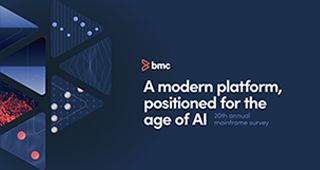We’ve all seen the latest headlines that tech hiring has started to retract, with companies like Meta, Tesla, Coinbase, Netflix, and many others announcing layoffs, hiring freezes, and cutbacks. If you’re a developer, this does not necessarily mean you should panic.
There are secular trends that will drive the need for IT talent for decades to come, but you may need to change your focus. While the rising interest in artificial intelligence and machine learning (AI/ML) has created a surge in the need for, and number of, Python developers, that may make it more difficult to find new opportunities, so developers should be open to other categories, especially those that do not get as much attention.
So, which ones, then? How about mainframe development?
Yes, this is certainly a contrarian view when the lingering perception is that mainframe development is old school and there are few opportunities. The reality, though, is much different, and the future for growth is actually quite promising.
Let’s see why.
Digital Transformation
Digital transformation remains one of the biggest priorities for CEOs, especially those of large companies. The fear is that a market disruption could take down incumbents, such as what happened with Blockbuster Video, Kodak, and Borders Books.
The market for digital transformation is expected to continue its growth, and a large portion of the spending that will come from companies in industries like insurance, healthcare, retail, banking, and utilities, which often have mainframe footprints. Governments, another institution with deep ties to the mainframe, will also need to modernize.
The bottom line: There is now and will continue to be a growing demand for developers who understand mainframe development. There will also be a need for skills to integrate modern technologies such as mobile apps.
Demographics
The 19th century philosopher, Auguste Comte, is often credited with the quote, “Demography is destiny.” Whether it was his or not, the idea holds. Population trends can have a huge impact.
What does this have to do with mainframe development? Well, many developers are from the Baby Boomer generation and they are retiring. In the meantime, there has not been much mainframe training for younger generations. Keep in mind that the COBOL programming language is rarely taught in colleges anymore.
So, while demand is driving the need for mainframe development, there is a problem with the supply of developers.
Modern Tech Stack
One knock against mainframe development is that the tech stack is fairly archaic. For example, TSO (Time Sharing Option) is a command-line system to interact with the IBM® z/OS® system. And another, ISPF (Interactive System Productivity Facility), is a text-based editor that uses a basic menu system.
But the good news is that there are also modern interactive development environments (IDEs) for the mainframe. They are often based on Eclipse and have functions like advanced debugging, visualizations, unit testing, continuous integration and continuous delivery (CI/CD), and so on.
Another powerful tool is Zowe, an open source platform that allows for connecting to a mainframe, creating application programming interfaces (APIs), and developing plugins. Zowe’s mission is to provide an experience on the mainframe that is similar to working on cloud platforms. This is important for younger developers because they want to work with modern tools.
Mainframe Power
On a global basis, IBM® is the dominant player in the mainframe market. This leadership goes back to the 1960s, when the company launched its iconic System/360.
While the market is mature, it continues to grow. In fact, the z15® system has posted the strongest growth in IBM’s history. And this is likely to continue because there are certain functions and capabilities for which mainframes are ideally suited.
Just look at the recently launched z16™. It can handle enormous workloads, such as crunching 300 billion financial transactions per day. The latency? Just one millisecond. The IBM Telum™ processor also comes with AI built into the chip, which allows training models at scale and in near real-time.
Conclusion
Younger generations, such as Millennials (1981 to 1996) and Generation Z (born after 1997) want a career that is about more than padding their bank accounts. They want to make an impact.
Mainframe development is a good avenue for this. A developer will often work on large systems that can positively impact millions of people. This could be a government mainframe program for social benefits, or a corporate application that provides accurate and efficient distribution of compensation for employees.




